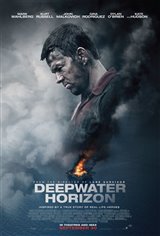There are over 850 offshore drilling rigs operating worldwide, and although many run in high-pressure zones, there are nearly zero blowouts.
The devastating case of the Macondo eruption, and the subsequent explosion and sinking of the Deepwater Horizon oil rig, are tragic exceptions.
The Deepwater Horizon rig, owned by Transocean and leased to British Petroleum (BP), was a mammoth-size structure that stretched nearly 400 feet. It was almost the size of a football field and has been called a "floating hotel" on numerous occasions, with each room on the rig equipped with a bathroom and satellite TV, and each floor kept clean by housekeepers who also did laundry. There was even a gym, sauna and movie theater on board.
Located just over 40 miles off the Louisiana coast, the space-age behemoth was situated above the Macondo well in the Gulf of Mexico. The rig was highly efficient, breaking world drilling records in September 2009 when it drilled the deepest oil well in history at a vertical depth of 35,050 feet. It was expertly built, believed to be immune to damage and capable of withstanding the worst conditions, including possible blowouts. But on the evening of April 20, 2010, it proved to be penetrable and unexpectedly fragile.
When a surge of natural gas blasted through a concrete core that had recently been installed to seal the well for later use, it quickly ascended through Deepwater's riser to the platform. Once there, it ignited, unleashing a massive explosion that went off like a bomb. The crew was immediately woken up and pelted by flying metal and whirling objects. They were consumed by clouds of smoke, flames and utter chaos.
The blowout killed 11 people and injured several others. A total of 94 crew members managed to escape the Deepwater Horizon, which burned for two days before it sank on April 22, 2010.
A New York Times article titled "Deepwater Horizon's Final Hours" was published on December 20, 2010 and chronicles the horror endured by those on the rig during the frightening night of the explosion. Based on 21 interviews with Horizon crew members, and sworn testimony and written statements from almost all 94 people who escaped, the events are expressed in unnerving detail.
The article states, "Crew members were cut down by shrapnel, hurled across rooms and buried under smoking wreckage. Some were swallowed by fireballs that raced through the oil rig's shattered interior. Dazed and battered survivors, half-naked and dripping in highly combustible gas, crawled inch by inch in pitch darkness, willing themselves to the lifeboat deck. It was no better there."
Aside from the loss of life caused by the blowout, the incident resulted in an almost unfathomable amount of oil discharge in the gulf. The U.S. government states that nearly 60,000 barrels of oil per day seeped out of the damaged well and into the water until it was finally sealed on July 15, 2010. That amount transfers to approximately $5 million worth of oil.
The leak had, and continues to have, highly destructive implications on marine life and other living organisms. As recently as April 2016, scientists were still discovering consequences of the explosion and the subsequent oil spill.
As of December 2014, BP had put over $14 billion towards clean-up efforts. The response movement involved the mobilization of nearly 48,000 people and the coordination of roughly 6,500 vessels employed to contain and/or absorb the oil.
Naturally, an investigation into the incident, which is recognized as one of the world's largest man-made disasters and the most catastrophic oil spill in U.S. history, was launched.
It was found that the blowout preventer (BOP) emergency functions failed to seal the well after the initial explosion, and that some of the rig's defenses were deployed but didn't work. The NYT article also states that "some were activated too late, after they had almost certainly been damaged by fire or explosions. Some were never deployed at all."
The NYT piece, which was written by David Barstow, David Rohde and Stephanie Saul, additionally notes that crew members on Deepwater Horizon were ill-equipped to handle a blowout.
The team that penned the article wrote, "At critical moments that night, members of the crew hesitated and did not take the decisive steps needed. Communications fell apart, warning signs were missed and crew members in critical areas failed to coordinate a response. The result, the interviews and records show, was paralysis. For nine long minutes, as the drilling crew battled the blowout and gas alarms eventually sounded on the bridge, no warning was given to the rest of the crew. For many, the first hint of crisis came in the form of a blast wave."
"The crew members...were unprepared for a major blowout followed by explosions, fires and a total loss of power."
Despite the number of casualties, the NYT article states that "many lives were saved by simple acts of bravery... All over the rig, in the most hellish of circumstances, men and women helped one another find a way to live."
~Matthew Pariselli
Photo: © John Mosier/ZUMApress.com/Keystone Press.
